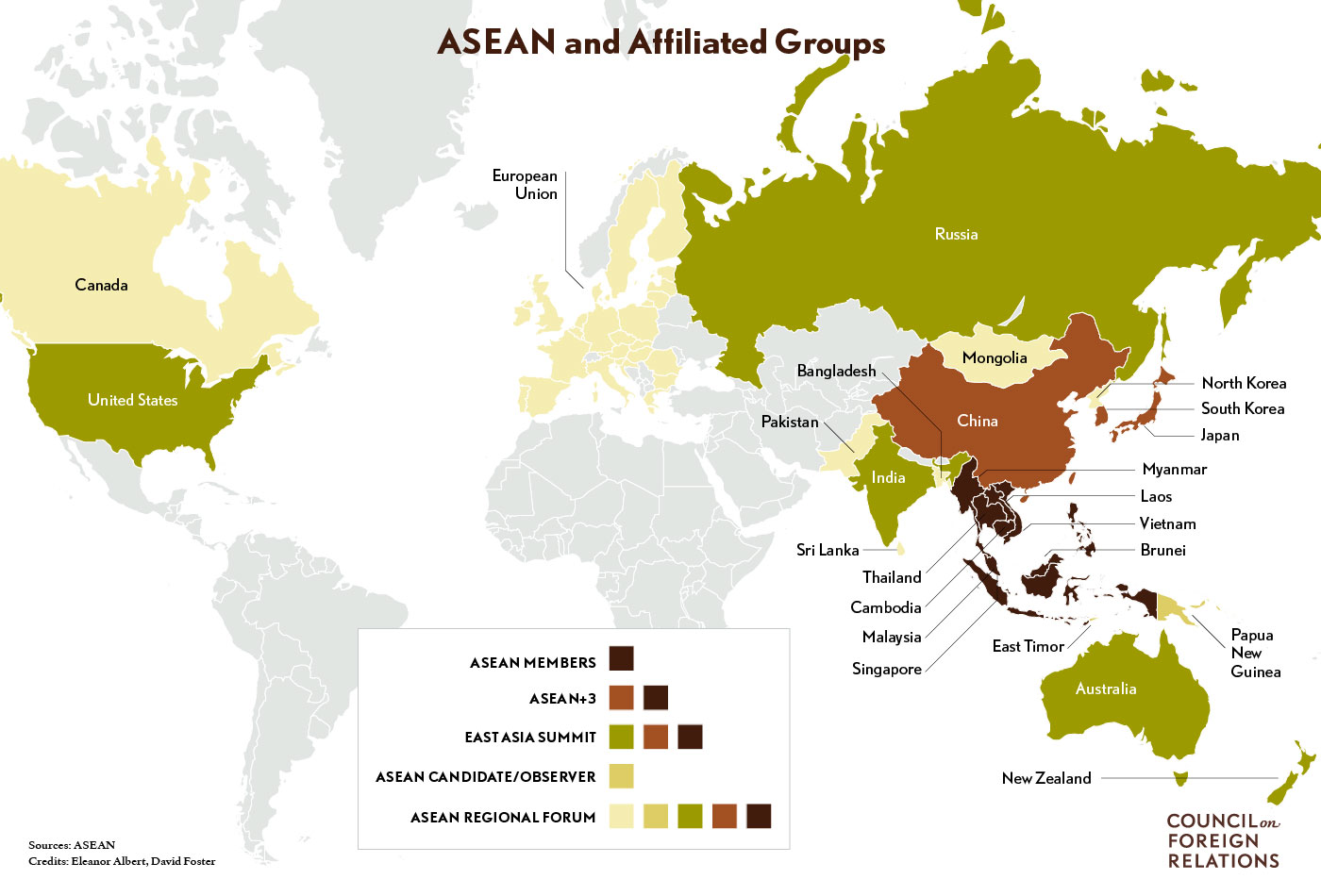.Why in news?
India will host the mega India-ASEAN commemorative summit shortly, marking 25 years of bilateral relations.
How did the partnership evolve?
- Ever since the launch of the Look East Policy in 1991, the bilateral relations have travelled a long distance.
- The two sides established a Sectoral Dialogue Partnership in 1992.
- This was elevated to a full-fledged dialogue partnership in 1996, and India also became a member of ASEAN Regional Forum.
- The bilateral tie up was further taken to a strategic partnership level in 2012.
- Currently, ASEAN and India have about 30 platforms for engagement, including an annual leaders’ summit and ministerial dialogues.
- The India-ASEAN bonhomie has broadened at political, strategic, security and defence level ties, in addition to the economic realm.
- ASEAN is now clearly the central pillar of India’s Act East Policy.

How is the economic integration?
- Despite multifrontal engagements, the prime focus continues to be the furtherance of economic and commercial ties.
- Evidently, ASEAN is India’s 4th largest trading partner, and India is the 7th largest trading partner of the bloc.
- The economic integration process further strengthened after the creation of the ASEAN-India free trade area in 2010.
- This was followed by the implementation of the India-ASEAN agreement on services and investment in 2015.
- Given all these, the bilateral trade and investment ties are still way below the true potential.
- Besides, the balance of trade has always been in favour of ASEAN member countries.
- The Indian FDI into ASEAN nations accounts for 22% of its total outbound FDI; far less in comparison to the US, the EU and Japan.
- Also, the investment share is skewed, with 99% of the total FDI inflows from the region coming from Singapore alone.
- This is because of the Comprehensive Economic Cooperation Agreement with Singapore.
- The other major Southeast Asian economies including Malaysia, Indonesia, and Thailand account for less than 1%.
What are the roadblocks?
- SMEs are a vital aspect of both Indian as well as the ASEAN economy, contributing nearly 45% to the Indian manufacturing.
- However, a range of factors hamper FDI inflows and SMEs collaboration between India and ASEAN countries.
- Some of them include:
- challenges in establishing a supply chain
- poor infrastructure
- bad maritime and air connectivity
- bureaucratic costs involved in complex tax and duty structures
- licensing, and other business activities
- Complexity - All the countries of the region have differing levels of socio-economic development, posing a challenge.
- The Indian SMEs have to adjust with a new set of supply-chain strategies to each country's varying regulatory requirements.
- Technology - The SME sector in India is hugely dependent on foreign technologies because of lack of in-house R&D.
- China - The CLVT countries (Cambodia, Laos, Vietnam and Thailand) are emerging as manufacturing hotspots for China.
- China is increasingly outsourcing its production to countries along the Belt and Road project, mainly ASEAN members.
- Given the low levels of manufacturing, these countries stand to gain from industrial capacity cooperation with China.
- The dominant Chinese footprint in the region makes the competition even tougher for Indian SMEs.
What should India focus on?
- Technological upgrading is pivotal to enabling the SMEs to be more competitive in the global market.
- India's logistics sector and the supply-chain environment should be developed to a world-class level.
- The ongoing projects and arrangements for infrastructure development and connectivity should be carried on without delays.
- They include:
-
- India-Myanmar-Thailand Trilateral Highway
- Bangladesh, Bhutan, India and Nepal (BBIN) Motor Vehicles Agreement, 2016
- Kaladan Multimodal Transit Transport Project (linking the Kolkata with Myanmar’s Sittwe port)
- LDCs of ASEAN bloc, like Laos, Vietnam, Cambodia and Myanmar, are the beneficiaries of generalised system of preferences in US and EU.
- Indian manufacturers setting up business units here are bound to get the benefits while exporting to the US and EU markets.
- India must use the upcoming commemorative summit to project it as a lucrative investment destination for the ASEAN countries.
Source: Financial Express
